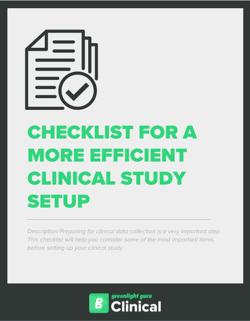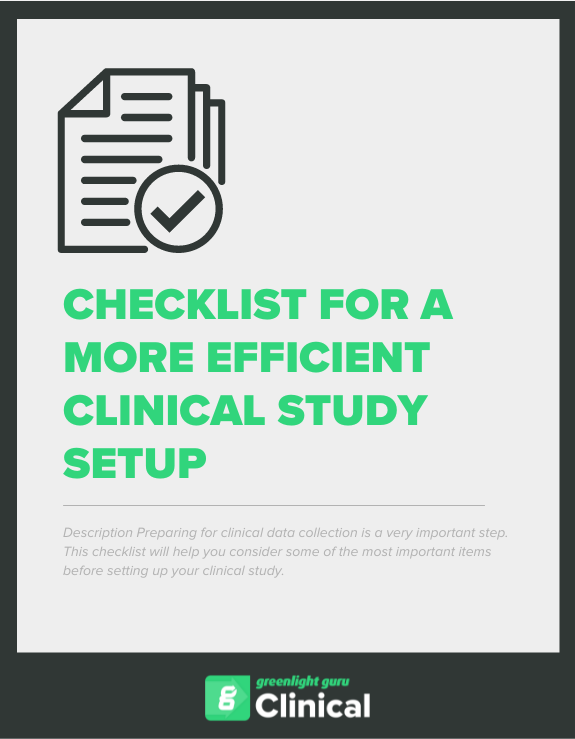Creative Clinical Recruitment: 4 Steps to Overcome Barriers to Participation

Recruiting participants is one of the most common reasons clinical trials are not completed on time—or at all. Sometimes, that’s because the team doesn’t allocate enough time for recruitment, and what was supposed to take three months really takes nine.
However, it’s often the case that the methods used for recruiting patients simply don’t attract enough participants within the trial’s timeline.
To explore how clinical research teams can overcome issues with recruitment, we invited Dr. Kelly Palmer, Assistant Professor at the University of Arizona, onto the Global Medical Device Podcast to talk about her success with patient recruitment in clinical trials. Joining us was Greenlight Guru’s own Stephanie Hinton, who worked with Kelly on a clinical study evaluating health interventions for people at risk of developing type II diabetes.
Why is patient recruitment such a struggle for some studies?
When Kelly began working in research, she noticed that recruitment methods weren’t always a priority when studies were being planned. She was working with some brilliant scientists who excelled at developing research interventions and methods for their studies. However, she couldn’t help but notice that the protocol for patient recruitment was often an afterthought. The general sense was, “If we build it, they will come.”
This isn’t an uncommon attitude, and it plays out in the types of activities that are traditionally used for study recruitment, like mailing postcards and calling people on the phone. And when these activities don’t yield the expected results, the study timeline suddenly begins to extend well past what was initially estimated.
Prior to clinical research, Kelly’s background was in marketing—specifically, guerilla marketing campaigns. She knew from experience that methods like paper mailers and phone calls were low-impact activities. Instead, she wanted to try more creative (and potentially high-impact) activities to boost patient recruitment and help the team meet their numbers.
Here’s how she did it:
1. Track everything related to participant recruitment
From the start, Kelly made sure that she and her team were tracking everything related to recruitment. They wanted to know exactly how people heard about the study and what the return on investment was from each enrollment activity.
Since every activity had a cost related to it (like personnel for calls or the cost of mailing postcards) it was essential to know how well each of those activities was working.
This is a critical step if you want to begin branching out with your study recruitment. If you approach your principal investigator with a “hunch” that you should change the recruitment protocol, you probably won’t have much success. But if you have specific data that shows your current efforts have a low ROI—and are affecting the study timeline—there’s a much better chance you’ll be given the go-ahead to try something new.
Once Kelly and her team could clearly show the principal investigator that the traditional recruitment approaches weren’t working, they got the green light to try new tactics.
2. Engage communities where they are
The team realized early on that the people who would benefit the most from the diabetes interventions were not being reached by postcards or phone calls. They didn’t necessarily have a lot of trust in research medicine, and they weren’t going to be persuaded by a phone call from a stranger.
So Kelly and her team changed their approach. Instead of sending messages, they actually went to the spaces where their target populations gathered. They worked to develop relationships through the community organizations and churches that people interacted with regularly and trusted. When their message came from a trusted source of information, people began to see the study as something that might be worth getting involved with.
As you’re considering different ways to get your message out, check out local organizations that you may be able to partner with. You may see the benefit in participating in your study, but that doesn’t mean everyone will. Having a trusted community group relay your message or allow you to speak at their event can make a huge difference in the reception you get.
That’s how it played out for Kelly and her team. As they continued to track their efforts, they could see that their new tactics—meeting people where they were—had a demonstrably higher ROI than what they had been doing previously.
3. Don't just ask; give something in return
To build relationships with the communities you’re going into, it helps to offer a true partnership instead of just coming in with a request. In other words, you have to consider how you’re incentivizing both the community organizations you work with and potential participants—beyond participation in the study.
That’s why it’s important to position your team as a resource for these communities. Ask yourself, what do people need in this moment? What is something tangible we can provide?
Most trials offer some financial compensation to participants, but it’s often a token amount that doesn’t actually cover the cost of participation, which may include transportation, childcare, or missing work. At one point, Kelly had to ask for the compensation for participants to be increased, because the initial rate simply wasn’t enough to cover the cost of missing work or getting childcare.
Her team also created a weekly newsletter on healthy habits and recipes and directed participants to other organizations or community resources that could help them. And the team made a point to explain test results and numbers to participants so they could have better conversations with their doctors about their health.
These may sound like high-effort activities, but they also have a high ROI when it comes to recruitment. If getting more participants signed up faster is your goal, then you need to consider what you’re really offering participants in return for their time.
4. Leverage technology to streamline data capture
Kelly and her team started the diabetes intervention study tracking everything on paper. Paper consent forms, paper screening forms, paper surveys—there were bags and boxes of paper everywhere.
Not only was the enormous amount of paper physically taxing to deal with, it was also error-prone and took the team's attention away from actually performing the study. After a patient filled out a form, it would undergo a quality check before going to the project manager. The project manager would send it to the biostatistician for another quality check—who might send it back to the research team because of a problem with the answers. The research team would then have to reach out to the participants to answer the question again or explain their answer.
So when Kelly and her team began looking around for a way to optimize the process, they realized there were electronic data capture (EDC) solutions that would allow the participants to enter data directly into the system and immediately cut down on the amount of steps in the process. On top of that, they realized it would actually be cheaper to use an electronic system because of the gains in efficiency and data accuracy.
When they approached their principal investigator and showed him that not only could they enter data directly into the system, but that it would also be less expensive than the back-and-forth, manual data entry, he jumped at the chance.
Remember, a study is only as good as the data it generates. Providing everyone in the study—both participants and the research team—with a better way to capture clinical data is a win-win.
Collect clinical data anytime, anywhere with Greenlight Guru Clinical
To get creative with participant recruitment in clinical studies, you need to have the right tools for the job. Whether that means eConsent or electronic surveys and forms like eCRF and ePRO, you need to be able to make it easy for participants to provide the answers you need, when it’s most convenient for them.
With Greenlight Guru Clinical, you’ll have the flexibility to design custom electronic case report forms (eCRFs) with data validation rules and question visibility options that reduce errors and ensure quality data capture, even from remote locations. For patient-reported outcomes, our platform’s secure ePRO features allow you to send forms and reminders through SMS or email, making it easy for participants to respond at their convenience.
Don’t let paper put a drag on your study timelines. Get your free demo of Greenlight Guru Clinical today!
Chris is a biomedical engineer and has been in the medical device space for about 13 years. He spent a number of years managing clinical studies for Class III devices in Pivotal studies, PMA studies, and post-market registries. He is currently working as a Solutions Engineer at Greenlight Guru where he showcases the...
Related Posts
Clinical Data Collection - 7 Key Pitfalls To Avoid In MedTech
Ultimate Guide to Clinical Data Management in MedTech
Creative Clinical Recruitment
Get your free download
Checklist for Clinical Data Collection and Efficient Study Setup











